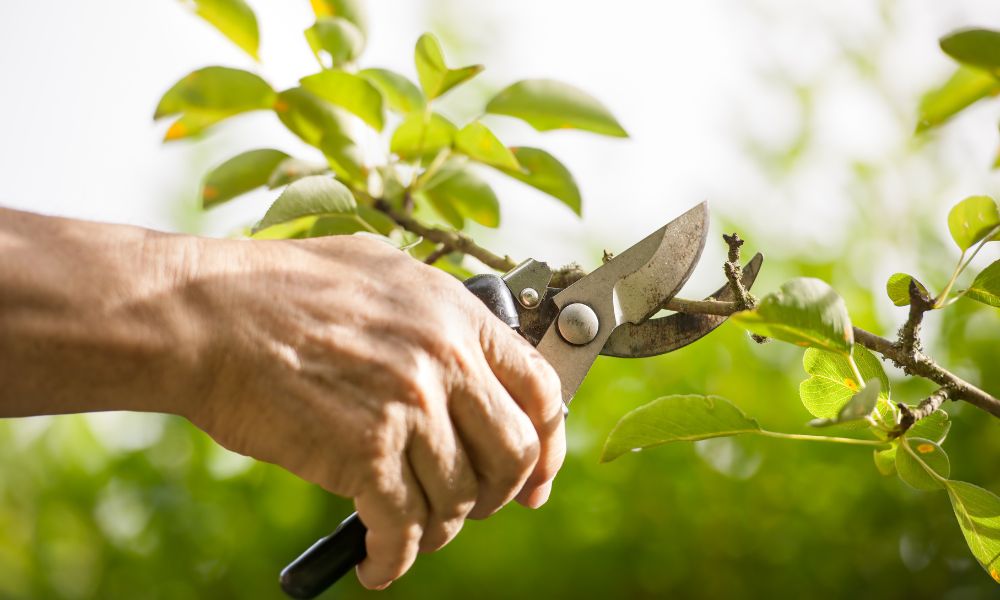
Caring for the trees in your Dallas yard requires an understanding of the unique seasonal challenges they face. From the scorching summer heat to potential winter chills, the different conditions of each season demand specific care strategies to maintain tree health and vitality. Here’s a comprehensive guide to seasonal tree care for Dallas homeowners.
Spring: Awakening and Revitalization
We’ll start by going over the tasks to do in the spring.
Assessing Winter Damage
Spring is the time to assess and address any damage your trees may have sustained during the winter. Look for broken branches, signs of frostbite on the foliage, or any fungal growth that might have taken advantage of the damp conditions. Early detection allows for timely intervention, preventing minor issues from becoming major problems. Consulting with a professional arborist for a thorough inspection can be beneficial.
Mulching for Moisture Retention
Applying a new layer of mulch in spring is essential for moisture retention, especially as Dallas enters the warmer months. Mulch helps keep the soil moist, reduces weed growth, and provides essential nutrients as it decomposes. Remember to keep the mulch a few inches away from the trunk to prevent rot and fungal diseases.
Spring Pruning
Pruning in the spring can invigorate your trees and promote healthy growth. Remove any dead, diseased, or damaged branches to improve the tree’s structure and allow for new growth. Be cautious with flowering trees because pruning too early can remove buds and reduce blooming. Consulting a pruning calendar specific to your tree species can guide you on the best timing.
Summer: Vigilance and Maintenance
When it gets hotter, make sure to remember these actions.
Adequate Watering
Dallas summers can be particularly harsh, making proper hydration of your trees critical. Deep watering encourages deep root growth, which helps trees better withstand drought conditions. The ideal time for watering is early in the morning or late in the evening to minimize evaporation. Adjust your watering schedule based on rainfall, temperature, and each tree’s specific needs.
Pest and Disease Management
The warm weather can bring a proliferation of pests and diseases. Regular inspections can help catch any infestations or infections early. Symptoms to watch for include discolored leaves, wilting, and unusual leaf drop. Some issues are manageable through targeted treatments, while others might require the expertise of a tree care professional to address effectively.
Protecting Young Trees
Young trees are particularly susceptible to summer stress. Ensure they have sufficient water, and consider installing sun shields to protect them from the intense Dallas sun. Proper staking can also help young trees withstand high winds and storms that are common in summer.
Fall: Preparation for Dormancy
Here’s the tree care you should do in the fall.
Nutrient Boost
Before your trees enter dormancy, giving them a nutrient boost can support their health throughout the winter. An application of slow-release fertilizer can encourage root development even as the above-ground growth slows down. This preparation helps trees emerge stronger in the spring.
Hydration Before Winter
Ensuring your trees are well hydrated before winter is crucial, especially for evergreens. A deep watering session in late fall can help prevent desiccation and reduce the risk of winter burn. Keep an eye on the weather forecast and provide an additional water supply if a particularly dry winter is in the forecast.
Pruning and Cleaning
Fall is an ideal time for pruning since the tree structure is more visible after the leaves drop. Removing dead or diseased branches before winter can prevent damage from snow and ice accumulation. Cleaning up fallen leaves and debris around your trees also helps reduce the habitat for pests and diseases overwintering in the litter.
Winter: Protection and Planning
Your trees may be dormant, but they still need attention in the winter. Do the following things.
Winter Watering
If the winter is dry, occasional deep watering on warmer days can benefit your trees, especially newly planted or young trees that are still establishing their root systems. Watering in winter helps prevent root desiccation, a common issue when the ground is frozen and the tree cannot take up moisture.
Tree Wrapping
For certain tree species, wrapping the trunk can protect against winter sunscald and frost cracks. You can use materials like burlap or commercial tree wraps. Cover the tree from the base upward, and ensure the material is breathable to prevent moisture buildup.
Inspecting for Structural Integrity
Winter’s bare branches offer the perfect opportunity for a detailed inspection of your trees’ structural integrity. Without leaves obscuring the view, you can easily spot potential problems, such as weak branch attachments, cracks, or decay in the trunk and limbs. It’s also the ideal time to assess the tree’s overall shape and identify any branches that might pose a risk to property or people if they fall.
Consider hiring a professional arborist to perform a risk assessment. They can identify hazards and recommend actions to mitigate dangers. This could include cabling weak branches, bracing splits in trunks, or removing a tree if it poses a significant danger.
Seasonal Pest and Disease Checks
Pests and diseases can wreak havoc on trees, with each season bringing its own set of challenges. Watch for signs of aphids or caterpillars in spring, which can quickly defoliate a tree if left unchecked. Summer may see the emergence of spider mites during dry or hot periods or fungal diseases like powdery mildew and leaf spots due to humidity. Regular inspections throughout the year can catch these issues early when they’re more manageable.
Employing integrated pest management (IPM) strategies, such as promoting beneficial insects, proper sanitation, and targeted chemical treatments when necessary, helps maintain tree health. For complex issues or to develop a year-long pest management plan, consult a professional tree care service. They can provide effective and environmentally sensitive treatments, ensuring your trees’ longevity and vitality.
Adjusting Care With Weather Changes
Dallas weather can be unpredictable, with sudden changes that stress your trees. Being ready to adjust your care regimen in response to weather alerts can make a significant difference in their ability to thrive. Provide extra water during a heatwave or wrap trees in anticipation of a freeze.
The Value of Professional Tree Services
Professional tree services are invaluable for specialized tasks like deep-root fertilization, disease diagnosis and treatment, and large-scale pruning and removals. These experts bring knowledge and equipment that ensures the job proceeds safely and effectively. Engaging a professional tree service can help maintain your trees’ health and beauty, ensuring they continue to enhance your property for years to come.
Now that you know these seasonal tree care tips for Dallas homeowners, you can ensure they remain a vibrant and valuable part of your Dallas home’s landscape. By understanding and applying these seasonal care tips, you can promote your trees’ health, growth, and longevity.

